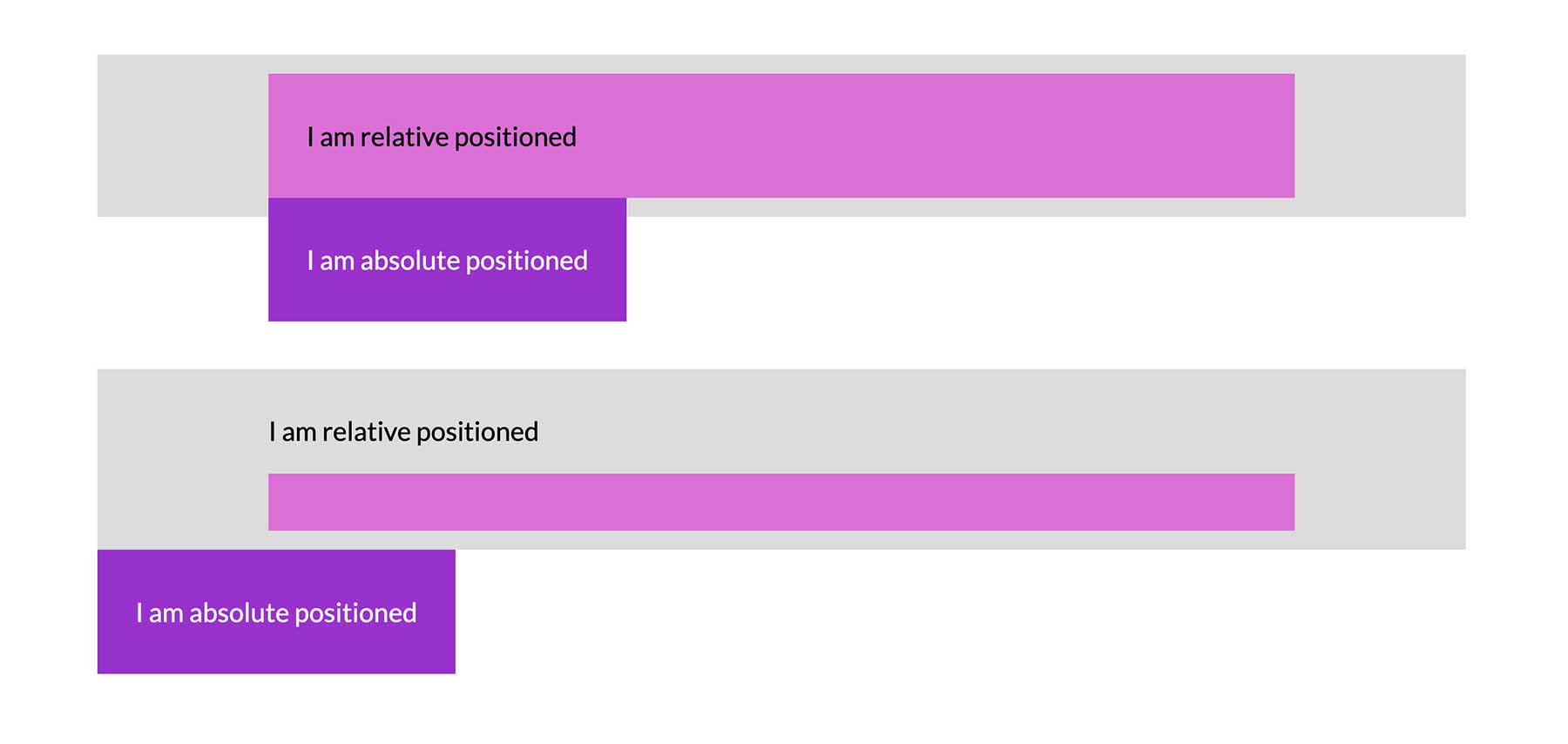This article was updated on 15 March 2021.
Have you ever been faced with a CSS positioning dilemma where an element with position: absolute isn’t being positioned as you’d expect? Setting absolute positioning on an element will position it in relation to its nearest ancestor that has its position set to something other than static (the default).

In the above image, the absolute-positioned element is positioned with the same CSS in both examples:
.absolute {
position: absolute;
top: 100%;
left: 0;
}But it ends up in a different place in each example. This is because in the first example its parent (the pink element) has position: relative, whereas in the second it’s another ancestor that has relative positioning (the grey element).
See the Pen Relative and absolute positioning by Michelle Barker (@michellebarker) on CodePen.
It’s worth noting that if no ancestor is positioned, an element with position: absolute will be placed in relation to the <body>.
In a relatively simple example like this one, a quick examination of the CSS makes it easy to determine which ancestor has relative positioning, and we can adjust our styles accordingly if they’re not having the desired effect. But sometimes, in more complex codebases (especially with a lot of nested elements), finding which ancestor of an element has relative positioning can be a little trickier. This most commonly happens to me when building complex headers with full-width dropdown submenus: I generally need to position them in relation to the entire header, but somewhere I’ve inadvertently set position: relative on some other element, which breaks the desired behaviour.
Trawling through all that code can be time-consuming, but happily there is an easier way to find the nearest positioned parent in Javascript — which we can do right in the browser console.
In Chrome and Firefox, if we open the Console tab in the developer tools, we can get the currently selected element by typing $0. Then we can use the offsetParent object property to find the closest ancestor to that element that has its position set to something other than static. Try selecting an element and typing this into the console:
$0.offsetParentThis won’t actually tell us the position value (whether it’s relative, fixed or something else). But we can use getComputedStyle to find out the value of the element’s position property:
getComputedStyle($0.offsetParent).positionBy typing $_ into the console we can retrieve the most recently evaluated expression as a variable, which can make this quicker too:
$0.offsetParentshows us the element. Then:
getComputedStyle($_).positionretrieves its position value.
There are a couple of caveats: offsetParent will return null if the element has its postion set to fixed or itself or its parent has display: none. (See MDN docs for details.)
In my experience position: relative is most commonly used for offsetting a descendent (as in the example I’ve used), but it’s worth bearing in mind that fixed or sticky values will also permit the behaviour — but perhaps those elements are a little easier to spot in the browser!
Webmentions for this page
About webmentionsLikes: 0
Reposts: 0
Mentions: 3